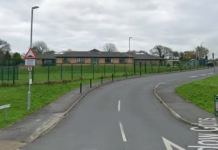From popping buttons on a blouse to constant neck, back and shoulder ache, women with ample breasts often experience a daily struggle when coping with this part of the anatomy. While breast reduction surgery in itself is very daunting, the recovery period can be even more distressing.
Dr Foued Hamza, an internationally renowned cosmetic surgeon, is now pioneering a revolutionary surgical procedure in the UK at the Queen Anne Street Medical Centre off Harley Street coined the ‘short scar large breast reduction. This new technique dramatically reduces the size and shape of a woman’s assets, leaving virtually unnoticeable marks and resulting in a shorter recuperation period.
The new technique is performed with a vertical rather than an anchor scar and offers a virtually imperceptible, less invasive solution to women suffering from moderate to severe breast ptosis (sagging) and pain caused by the strain of the weight from the chest on the rest of the body. Previously, large breasts required formal, under the breast scars (anchor scaring) as well.
The procedure is an upgraded version of Dr Hamza’s short scar breast reduction, commonly performed on women who only require a small size alteration. Dr Hamza has redeveloped this technique for women with larger breasts to address physical and emotional difficulties associated with this body part including back and shoulder pain. Depending on the suitability of the patient, this invasive operation can also be performed in cases of breast asymmetry, as Dr Hamza also evens out the nipple level on both breasts.
The short scar large breast procedure is less invasive than the traditional breast reduction operation and has a much shorter recovery period as it is performed in one to two hours, either under general anaesthetic or under local anaesthetic with intravenous sedation. As a result, this operation is an option for women whom for health reasons, can’t tolerate the traditional longer operations. The patient will not need to stay in hospital overnight and can return to their standard daily activities within five days, depending on the complexity of the operation.
In addition, in contrast to the standard breast reduction procedure, which leaves the patient with potential alterations in the sensation of the nipple and areola area due to the extensive cutting into the breast tissue, this procedure won’t produce a change in sensation, or ability to breast feed.
In the post-operative period, the patient will experience little or no pain, and the quarter inch scar in the fold under the breast will heal harmonically over the course of 6 months, while the swelling naturally reduces.
Dr Foued Hamza, consulting at Queen Anne Street Medical Centre, says: “Breasts that were once firm, often begin to sag and drop at different stages in a woman’s life due to genetics, the ageing process, pregnancy and breast feeding, weight gain or loss, or hormonal fluctuations. In addition to loss of confidence about their appearance, ladies have also come to my practice to complain about the pain and discomfort caused by this extra weight. I have seen extreme cases where the shape of a woman’s posture has actually been affected and altered over time by this condition causing her to stoop over to one side. In our field of work, cosmetic surgeons always have to take into consideration the risks and benefits of each operation, judging how suitable these may be for the individual. Overall, this technique includes less downtime, reduced risks of infection and bleeding, and a minimum recovery process than the usual breast reduction operation. I always maintain a close individual relationship with each of my patients to offer them bespoke, direct and honest advice, without judgment, while listening to their issues and desires to understand fully and take into consideration their requirements before carrying out any procedures.”
The operation starts with a vertical technique, which involves a V-shaped incision that extends around the top of the areola and down the midline of the breast. In some cases, Dr Hamza may do several small incisions which are hidden in the border of the areola, where a micro cannula (a very thin, tiny, flexible hollow tube with a smooth round tip) is introduced. The sizeable breasts are then reduced in the deep, middle and superficial layers through liposculpture, which can result in a decrease by two or three cup sizes and a moderate elevation of the nipple level. The skin is then lifted and stitched in its new position and the excess skin is removed. The nipples will then be repositioned to ensure that the breasts look as natural as possible.
After surgery, the skin will reveal a high degree of shrinkage, with the nipple/areola often rising one to two inches once fully healed. The operation provides a significant lift in most patients, but the amount is determined by the person’s elastic skin characteristics, not skin removal.
This technique can be used in conjunction with other cosmetic surgery procedures, however a comprehensive consultation is required on a case by case basis to assess if the candidate is appropriate. Although Dr Hamza can combine two treatments in one operation, he advises patients to allow at least six months between each surgery to ensure that the body has healed and the recovery process is complete.
Dr Foued Hamza has been practising cosmetic surgery for over 20 years and is ranked as one of the best practitioners in his field. He is currently consulting at Queen Anne Street Medical Centre, a modern and comfortable practice in the heart of London, off Harley Street.
For further information visit www.drhamza.co.uk

| [donate]
| Help keep news FREE for our readersSupporting your local community newspaper/online news outlet is crucial now more than ever. If you believe in independent journalism,then consider making a valuable contribution by making a one-time or monthly donation. We operate in rural areas where providing unbiased news can be challenging. |

















